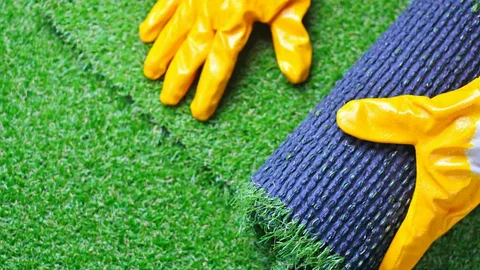Custom Patches in the United States: The Ultimate 2025 Guide
If you actually pay attention while you’re out running errands,grabbing a coffee, at a ballgame, or even walking through an airport,you’ll notice custom patches everywhere. They’re stitched on aprons, sewn on jackets, tucked on backpacks, and even on caps that look like they’ve been worn for years. The funny thing is, most of us don’t think about them, but they’re literally woven into everyday life in the U.S.
Here’s the truth: patches aren’t new at all. They’ve been here for decades. They started out with practical,military insignias, scouting badges, and sports logos. They weren’t about “style” back then; they served a clear purpose: identity and recognition. Fast forward to now, and they’ve shifted into branding tools, fashion accessories, and even collectibles.
And the best part? They’re easier (and cheaper) than they’ve ever been. With services like Custom Patches US, you can literally upload a design, pick a style, approve a proof, and your patches are shipped to your door. No complicated process. No insane pricing. It’s quick, simple, and works for pretty much anyone,from small business owners to people who just want to customize a jacket.
A Look Back: How Patches Went From Utility to Style
Patches have been tied to history for over a century. Military units used them to mark rank, branch, and unit identity. Scouts wore them proudly as achievements,earning badges was a rite of passage (I still remember my first camping badge; it felt like a trophy). Sports teams added patches to uniforms to show team pride.
Then came the ’70s and ’80s, and everything changed. Bands, bikers, and subcultures turned patches into statements. A denim jacket covered in patches wasn’t about uniformity, it was rebellion, personality, and attitude. From there, patches drifted into everyday fashion. Today, you’ll see them on work uniforms, yes, but also on high-end designer gear. Somehow, they manage to exist in both worlds at once.
Why Custom Patches Are So Popular Again
Ever wonder why patches are everywhere again in 2025? Honestly, it’s pretty simple-they last.
Unlike printed designs that fade or peel after a handful of washes, a well-made patch can hold up for years. You can wear it, wash it, and repeat the cycle countless times, and it’ll still look almost brand-new. That kind of reliability is hard to beat.
- They’re cost-effective: Swap out a patch instead of replacing an entire shirt or jacket.
- They’re versatile: You can sew them, iron them, stick them on with Velcro, it depends on your need.
- They stand out: Retro embroidery and bold logos feel fresh again in fashion.
I saw this firsthand at a small craft brewery in Austin. Instead of spending on expensive branded shirts, the staff went with simple denim button-ups and added embroidered patches. It matched their laid-back, rustic vibe perfectly. People liked the look so much that customers actually began asking if they could buy the shirts. Suddenly, uniforms turned into merch. That’s the quiet power of patches: they brand and market at the same time.
Types of Custom Patches
If you’re new to this, the first thing you need to know is that not all patches are the same. Here’s the breakdown:
1. Embroidered Patches
These are the classics, the ones you immediately picture. Raised stitching gives them texture and depth.
Ideal for: sports teams, scout badges, and standard uniforms
2. PVC Patches
PVC patches consist of a tough, rubbery material that’s designed specifically to withstand. They’re great for outdoor equipment, tactical gear, or whatever else you need to be able to withstand rough, repeated use.
Why: They can handle any type of weather, they’re long-lasting, and they have a clean, sleek appearance.
3. Woven Patches
Flat, smooth, and ideal for very fine detail.
Best for: Fashion logos, event branding.
Why: Because clean lines really pop, and those sharp details stay crisp. woven patches excel at that.
4. Leather Patches
Leather patches bring a rugged yet polished vibe. They actually age really well leather patches tend to look better the more you wear them.
Works best on: denim jackets, casual caps, or anything that could use a subtle upscale detail.
Why: They add a premium touch without feeling overdone.
Backing Options
The way you attach a patch really changes how it works:
- Iron-On: Quick and easy just press it on with an iron.
- Sew-On: The most secure choice if you want it to stay put.
- Velcro: Great for swapping patches, especially for uniforms.
- Adhesive: Temporary ideal for events or short-term needs.
Where You’ll See Patches
Once you notice them, they’re everywhere:
- Coffee shops: Logo patches on aprons or shirts.
- Sports teams: On jerseys, hats, and fan gear.
- Military/police: Velcro patches for rank or unit changes.
- Streetwear: Big embroidered patches on jackets and bags.
- Events: Limited-edition patches people trade or keep.
One scout troop I know designs a new patch every summer. A decade later, people still have them sewn onto backpacks like small souvenirs that hold memories.
Why Businesses Swear by Them
Businesses use patches because they save money and keep branding sharp. A Florida hotel I visited switched to simple polos with stitched patches instead of custom-printed uniforms. A year later, they rebranded. Instead of replacing hundreds of shirts, they just swapped out patches. That move alone saved them thousands of dollars.
How to Order Online
Through Shop About Custom Patches US, it’s straightforward:
- Pick your patch type.
- Upload your logo (or let them help tweak it).
- Choose size, colors, and backing.
- Approve your proof.
- Get your patches delivered fast.
Design Tips for Better Patches
From experience, here’s what works:
- Keep it bold: Tiny lines and overly intricate details don’t stitch well.
- Think contrast: Dark backgrounds need light thread and vice versa.
- Size smartly: Small patches for caps, larger ones for jackets and uniforms.
- Double-check proofs: A typo in embroidery is permanent.
Event Uses
Patches are amazing for events. Music festivals drop exclusive patches every year. Charities hand them out to donors (and people actually keep them). Even small-town bike rides use them for participants. Unlike shirts or flyers, patches don’t just vanish—they stick around for years.
FAQs
Q: How much do patches cost?
It varies. One-off patches are usually a few dollars each, but ordering in bulk slashes costs dramatically sometimes under $1 per patch. I know a coffee shop that patched its entire staff’s uniforms for less than the price of two new branded shirts.
Q: Are they washable and long-lasting?
Yes. High-quality patches are built for washing machines and daily use. I still have a hiking bag from 2012 with a patch that’s been through rain, mud, and sun. It looks the same as the day I sewed it on.
Q: Can I order just one patch?
Absolutely. Single orders are perfect for testing designs or gifting. I once had a single leather patch made for a friend’s backpack. It looked custom and personal without needing a full order.
Final Thoughts
Patches might be simple, but they do so much. They last for years, they save businesses money, they bring teams together, and they let individuals add personality to almost anything they wear or carry.
If you’re ready to get started, Custom Patches US makes it easy: free proofs, quick shipping, and patches built to last for years. Once you use them, you’ll see why patches have never really gone out of style.



